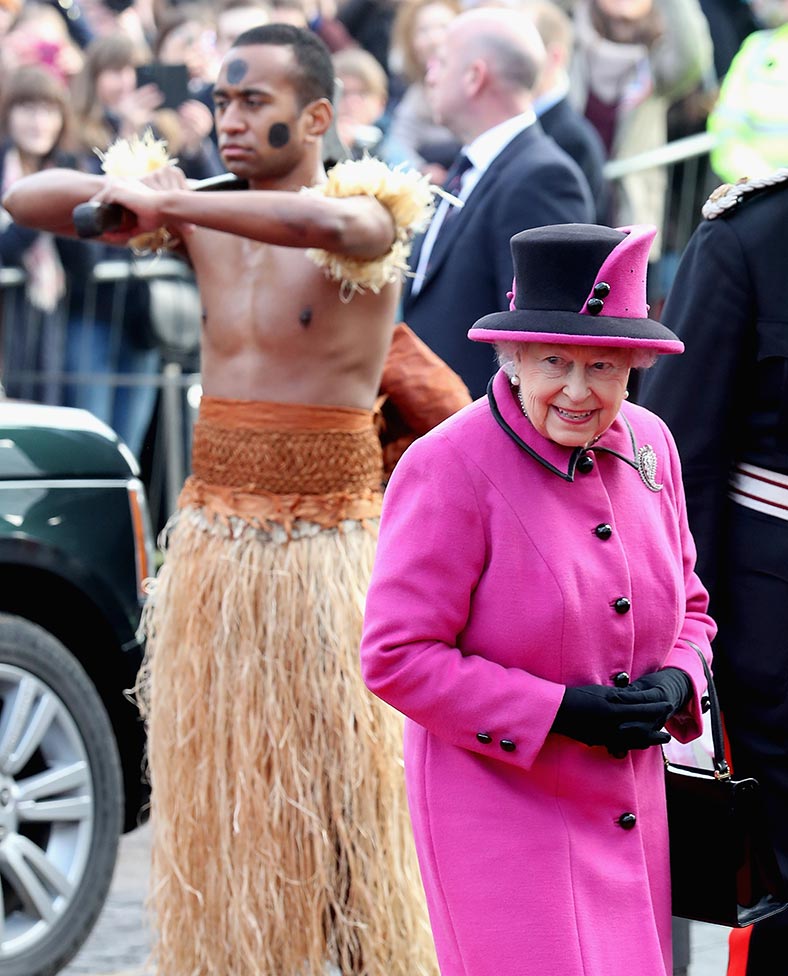Don't mind me, Ma'am! Queen looks startled when greeted by semi-naked man
Her Majesty visits the University of East Anglia for a Fijian exhibition.

Queen Elizabeth II is not one to let on her inner emotions in public, but couldn't hide her startled facial expression on her latest public engagement when she was greeted by a semi-naked man.
The 90-year-old British monarch was in high spirits on her visit to the University of East Anglia (UEA) on Friday 27 January, proving she had fully bounced back from her recent health blip.
Adding to her cheery mood, the senior royal was greeted by a barefooted, topless man as she exited a vehicle, and she couldn't help but flash a smile at the surprise.
Looking slightly taken aback by the first impression, Her Majesty remained ever the professional and continued smiling as she met with officials.
Dressed in a bright fuchsia pink suit complete with a matching hat, the Queen toured the attraction at the university, which is billed as the largest and most comprehensive exhibition about the South Pacific nation.
On her tour, the Queen saw a major exhibition chronicling the culture and art of Fiji in the university which is based in Norwich.
Fiji: Art & Life in the Pacific is being staged at the Sainsbury Centre for Visual Arts at the university, and features impressive textiles, sculptures and ceramics alongside ivory and shell regalia.


Also impressing Her Majesty at the showcase was both Fijian artworks and a European response to them in the form of paintings to historic photographs from the 19<sup>th and 20<sup>th century.
During the visit, the Queen met and chatted with Fijian students studying at the UEA along with other Fijians residing in Britain. The couple also saw the ceremonial whale tooth, known as a tabua, which was presented to her during her first visit to Fiji in 1953.


Professor Steven Hooper, the research project leader and exhibition curator, said: "An important aspect of this exhibition is that the many examples of exceptional Fijian creativity on display are not presented as 'ethnographic specimens' or 'illustrations' of Fijian culture, but as works of art in their own right, as worthy of attention as any art tradition in the world, including Modernism.
"Remarkable creative imagination is applied to the making of ancestral god images, ritual dishes and regalia, and to the decoration of enormous barkcloths."


© Copyright IBTimes 2025. All rights reserved.






















